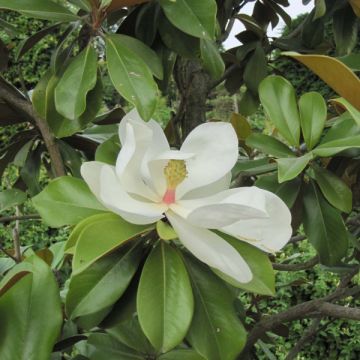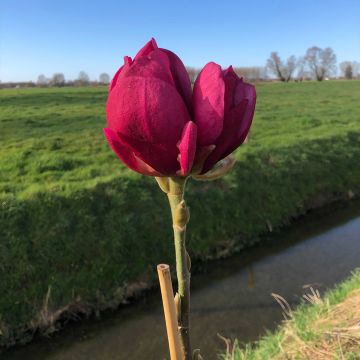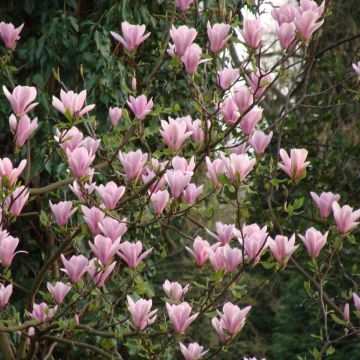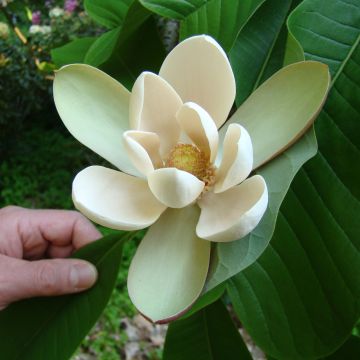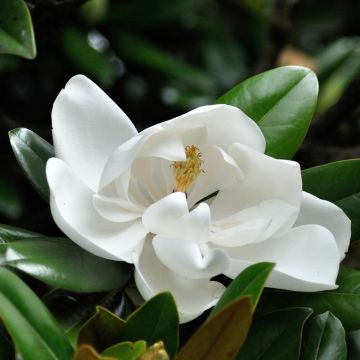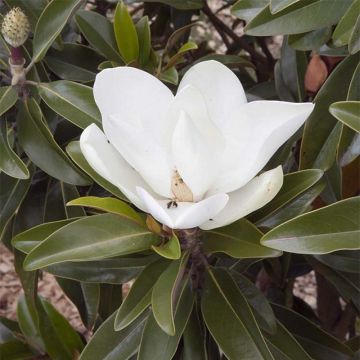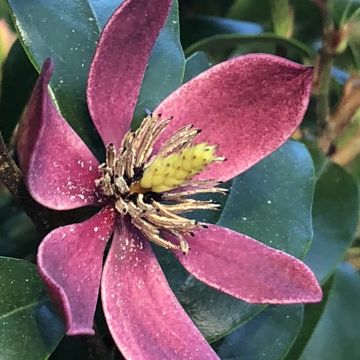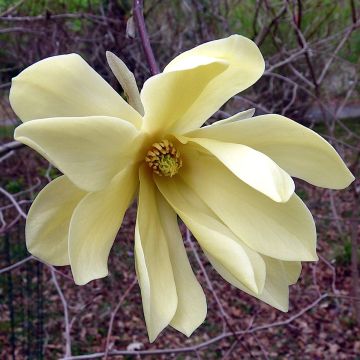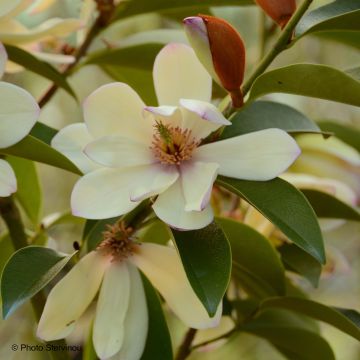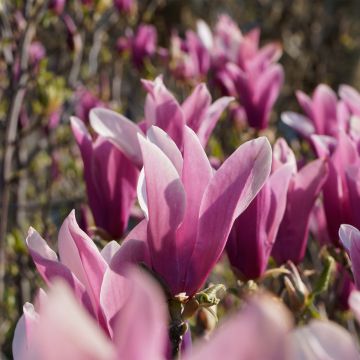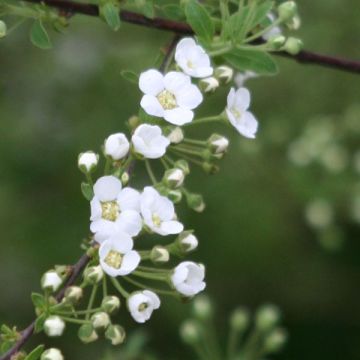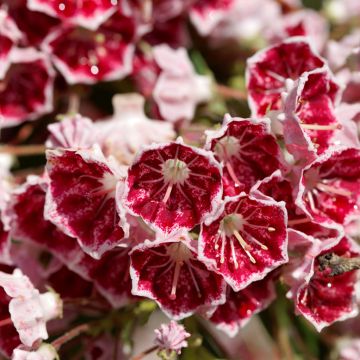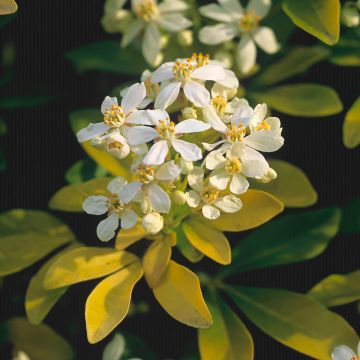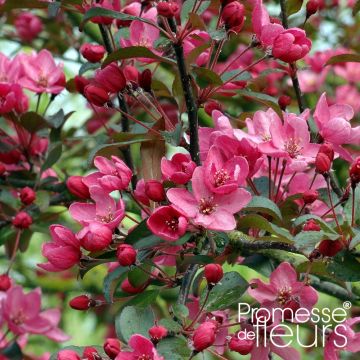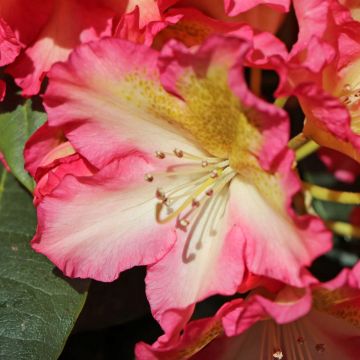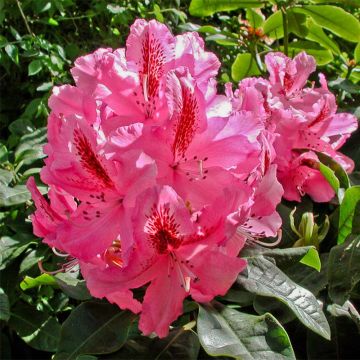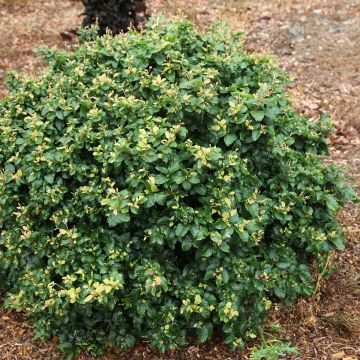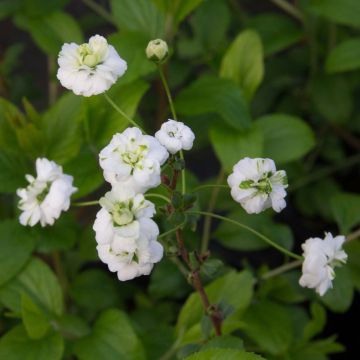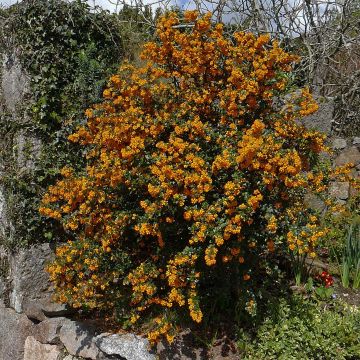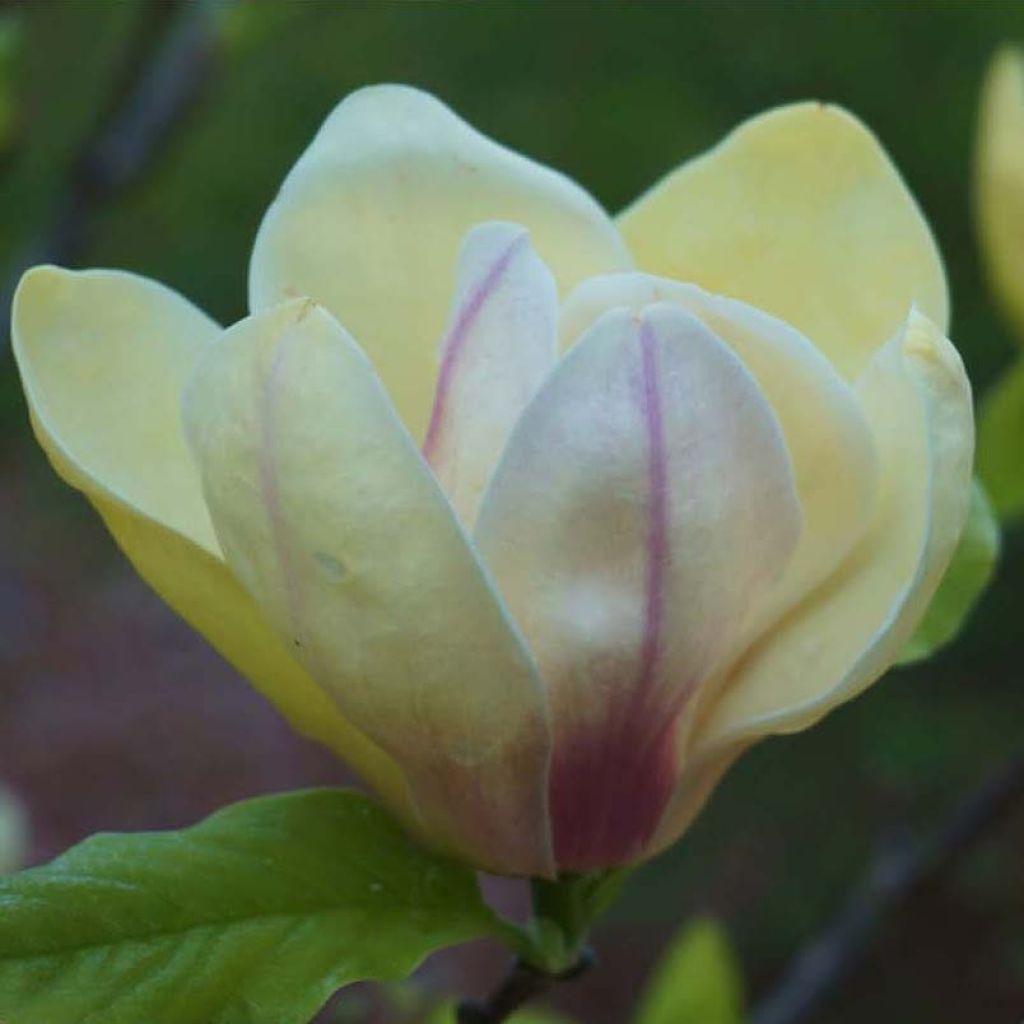

Magnolia x brooklynensis Sunsation
Magnolia x brooklynensis Sunsation
Magnolia x brooklinensis Sunsation
Magnolia
This item cannot be shipped to the selected country
Delivery charge from €5.90
Delivery to Corse prohibited
More information
Schedule delivery date,
and select date in basket
This plant carries a 24 months recovery warranty
More information
We guarantee the quality of our plants for a full growing cycle, and will replace at our expense any plant that fails to recover under normal climatic and planting conditions.
From €5.90 for pickup delivery and €6.90 for home delivery
Express home delivery from €8.90.
Delivery to Corse prohibited: UE law prohibits the import of this plant from mainland France to Corse as part of the fight against Xylella fastidiosa. Please accept our sincere apologies.
More information
Does this plant fit my garden?
Set up your Plantfit profile →
Description
The Sunsation Magnolia is a fairly sensational hybrid variety recently developed in the USA that will delight enthusiasts and collectors of rare and original varieties. This magnolia is undoubtedly the first to produce large flowers that are almost bi-coloured, in shades of yellow and rose-violet with a hint of green. They bloom quite late in spring, protecting the precious flower buds from late frosts. Of medium stature, this deciduous small tree with an ample and pyramidal habit is also adorned with elegant dark green foliage. Like all magnolias, it thrives in a moist, preferably neutral or acidic soil, in full sun or partial shade.
This Magnolia, belonging to the magnolia family, is an American horticultural creation (Caroline), resulting from the crossbreeding between the vigorous Magnolia x brooklynensis 'Woodsman', very floriferous and hardy, with pink and yellow-green flowers, and the M. 'Elizabeth', smaller, with pale yellow flowers. A vigorous small tree with a broadly conical shape, slightly taller than wide, it reaches an average height of 7 meters (23 feet) at maturity, with a width of 5 meters (16 feet). It grows quite rapidly and has a single trunk. Its deciduous foliage consists of large dark green leaves, with a paler and finely villous underside. From May to June, among the very young leaves, large solitary flowers bloom, reaching a height of 17 to 20 cm (7 to 8 in), slightly fragrant. The buds that precede the flowering are protected by silky and colourful bracts, followed by tulip-shaped flowers with 6-7 waxy and thick tepals (indistinguishable sepals and petals), golden yellow to anise green, washed and veined with rose-violet, with the inner face more strongly tinged with mauve pink at full bloom. They gradually open in a cup shape, revealing numerous orange stamens.
This Magnolia, an excellent ornamental tree, will work wonders in both medium-sized gardens and large parks. It is most often used as a solitary specimen in the middle of a short grass meadow, where its original watercolour-like flowering is truly stunning. It can also be associated with a mass planting of acid-loving shrubs (Rhododendrons, Camellias, Hydrangeas, Pieris, Kalmia...), for a Japanese-style garden. It is also possible to create beautiful flowering hedges along pathways, alternating this Magnolia with other cultivars (Magnolia grandiflora, Magnolia denudata...), flowering apple or cherry trees, mock oranges, lilacs, kolkwitzia... according to your preferences.
Anecdote:
Magnolias are ancient trees, with fossils dating back more than 20 million years. Their magnificent flowering is considered one of the most primitive: their flowers are, from an evolutionary point of view, similar to the earliest existing flowers.
The bark of magnolias has medicinal properties and is used in cosmetics.
Their wood is considered precious.
Historical note:
Its name, Magnolia, was given to it in 1703 by Charles Plumier, botanist of King Louis XIV, thus paying tribute to the physician-botanist Pierre Magnol (1638-1715), who was one of the directors of the Botanical Garden of Montpellier at the end of the 17th century. Its species name, soulangeana, originates from Etienne Soulange-Bodin (1774-1846), a retired cavalry officer from Napoleon's army who devoted himself to horticulture. In his château de Fromont, near Paris, he was passionate about Magnolias and obtained this hybrid in 1829, which today is the origin of a magnificent lineage of cultivars!
Report an error about the product description
Magnolia x brooklynensis Sunsation in pictures
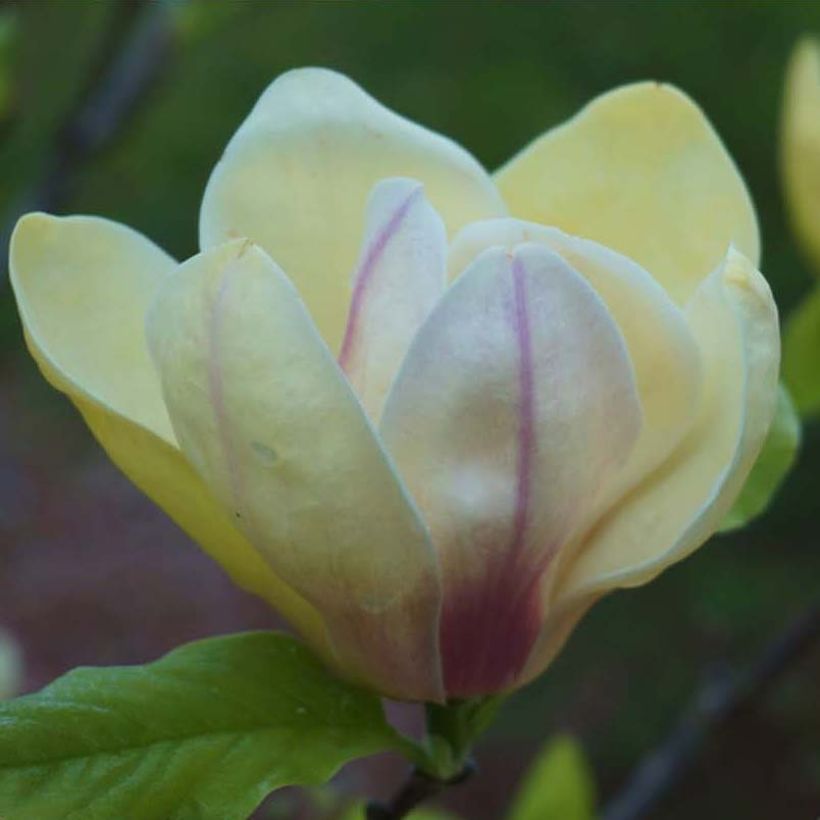

Plant habit
Flowering
Foliage
Botanical data
Magnolia
x brooklinensis
Sunsation
Magnoliaceae
Magnolia
Cultivar or hybrid
Other Magnolia
Planting and care
The 'Sunsation' magnolia prefers sheltered locations, sunny to partially shaded exposures, a moist, well-drained, rich, neutral or acidic soil. It is not picky about soil quality. However, it does not like overly chalky and dry soils, windy locations, or root competition, as its root system is shallow. It is highly hardy (up to -20°C (1°F)), but it is advisable to protect young specimens from frost during the first years after planting. Note that late frosts and cold winds can damage flower buds and young leaves, thus affecting flowering. Planting the Magnolia can be done in spring or autumn, outside the frost period, making sure to place it in a sheltered spot away from cold winds. Prepare a hole 80 cm (32 in) wide and deep, with a good supply of ericaceous compost and organic matter. Be careful when placing it in the hole to avoid breaking the fleshy but fragile roots. Immediate watering with lime-free water (rainwater) helps to settle the soil around the roots. During the first year after planting, the Magnolia requires watering once a week. It will appreciate an annual mulch in spring. It is recommended to mulch the base to keep it moist during the hot season, enrich the soil, and protect it from the cold in winter. Since its roots are fragile, it is best to avoid transplanting it. The only enemies of the Magnolia are pests such as scale insects, snails, and slugs that attack young plants, as well as diseases such as root rot (in overly waterlogged soil), coral disease, and fungal diseases. It should be noted that magnolias are ornamental trees that tolerate atmospheric pollution well.
Planting period
Intended location
Care
This item has not been reviewed yet - be the first to leave a review about it.
Spring-flowering shrubs
Haven't found what you were looking for?
Hardiness is the lowest winter temperature a plant can endure without suffering serious damage or even dying. However, hardiness is affected by location (a sheltered area, such as a patio), protection (winter cover) and soil type (hardiness is improved by well-drained soil).

Photo Sharing Terms & Conditions
In order to encourage gardeners to interact and share their experiences, Promesse de fleurs offers various media enabling content to be uploaded onto its Site - in particular via the ‘Photo sharing’ module.
The User agrees to refrain from:
- Posting any content that is illegal, prejudicial, insulting, racist, inciteful to hatred, revisionist, contrary to public decency, that infringes on privacy or on the privacy rights of third parties, in particular the publicity rights of persons and goods, intellectual property rights, or the right to privacy.
- Submitting content on behalf of a third party;
- Impersonate the identity of a third party and/or publish any personal information about a third party;
In general, the User undertakes to refrain from any unethical behaviour.
All Content (in particular text, comments, files, images, photos, videos, creative works, etc.), which may be subject to property or intellectual property rights, image or other private rights, shall remain the property of the User, subject to the limited rights granted by the terms of the licence granted by Promesse de fleurs as stated below. Users are at liberty to publish or not to publish such Content on the Site, notably via the ‘Photo Sharing’ facility, and accept that this Content shall be made public and freely accessible, notably on the Internet.
Users further acknowledge, undertake to have ,and guarantee that they hold all necessary rights and permissions to publish such material on the Site, in particular with regard to the legislation in force pertaining to any privacy, property, intellectual property, image, or contractual rights, or rights of any other nature. By publishing such Content on the Site, Users acknowledge accepting full liability as publishers of the Content within the meaning of the law, and grant Promesse de fleurs, free of charge, an inclusive, worldwide licence for the said Content for the entire duration of its publication, including all reproduction, representation, up/downloading, displaying, performing, transmission, and storage rights.
Users also grant permission for their name to be linked to the Content and accept that this link may not always be made available.
By engaging in posting material, Users consent to their Content becoming automatically accessible on the Internet, in particular on other sites and/or blogs and/or web pages of the Promesse de fleurs site, including in particular social pages and the Promesse de fleurs catalogue.
Users may secure the removal of entrusted content free of charge by issuing a simple request via our contact form.
The flowering period indicated on our website applies to countries and regions located in USDA zone 8 (France, the United Kingdom, Ireland, the Netherlands, etc.)
It will vary according to where you live:
- In zones 9 to 10 (Italy, Spain, Greece, etc.), flowering will occur about 2 to 4 weeks earlier.
- In zones 6 to 7 (Germany, Poland, Slovenia, and lower mountainous regions), flowering will be delayed by 2 to 3 weeks.
- In zone 5 (Central Europe, Scandinavia), blooming will be delayed by 3 to 5 weeks.
In temperate climates, pruning of spring-flowering shrubs (forsythia, spireas, etc.) should be done just after flowering.
Pruning of summer-flowering shrubs (Indian Lilac, Perovskia, etc.) can be done in winter or spring.
In cold regions as well as with frost-sensitive plants, avoid pruning too early when severe frosts may still occur.
The planting period indicated on our website applies to countries and regions located in USDA zone 8 (France, United Kingdom, Ireland, Netherlands).
It will vary according to where you live:
- In Mediterranean zones (Marseille, Madrid, Milan, etc.), autumn and winter are the best planting periods.
- In continental zones (Strasbourg, Munich, Vienna, etc.), delay planting by 2 to 3 weeks in spring and bring it forward by 2 to 4 weeks in autumn.
- In mountainous regions (the Alps, Pyrenees, Carpathians, etc.), it is best to plant in late spring (May-June) or late summer (August-September).
The harvesting period indicated on our website applies to countries and regions in USDA zone 8 (France, England, Ireland, the Netherlands).
In colder areas (Scandinavia, Poland, Austria...) fruit and vegetable harvests are likely to be delayed by 3-4 weeks.
In warmer areas (Italy, Spain, Greece, etc.), harvesting will probably take place earlier, depending on weather conditions.
The sowing periods indicated on our website apply to countries and regions within USDA Zone 8 (France, UK, Ireland, Netherlands).
In colder areas (Scandinavia, Poland, Austria...), delay any outdoor sowing by 3-4 weeks, or sow under glass.
In warmer climes (Italy, Spain, Greece, etc.), bring outdoor sowing forward by a few weeks.

































